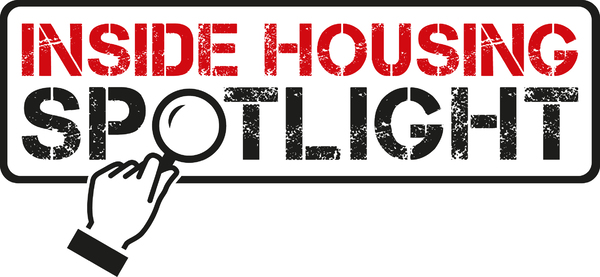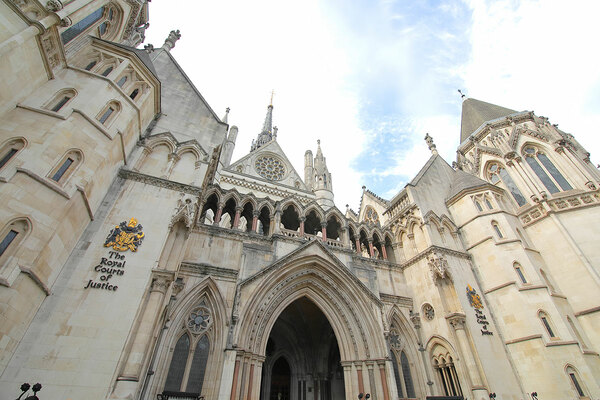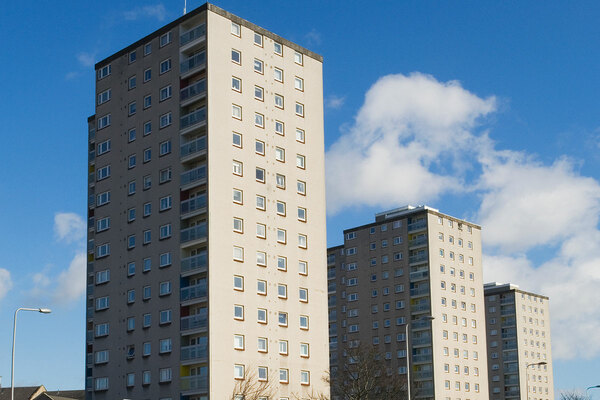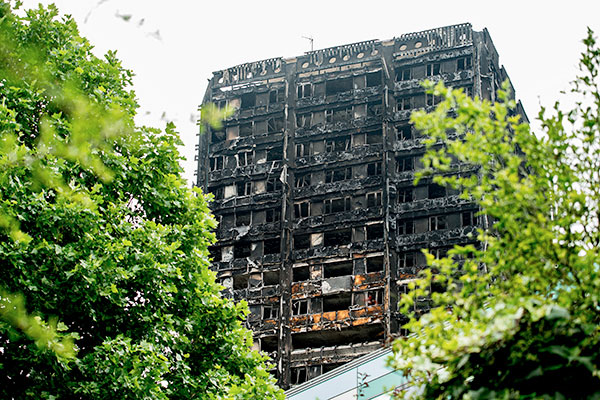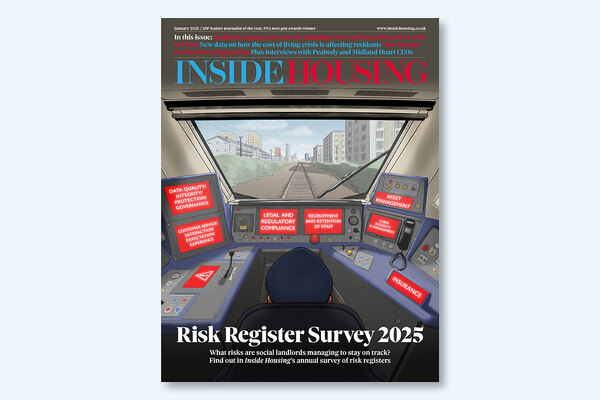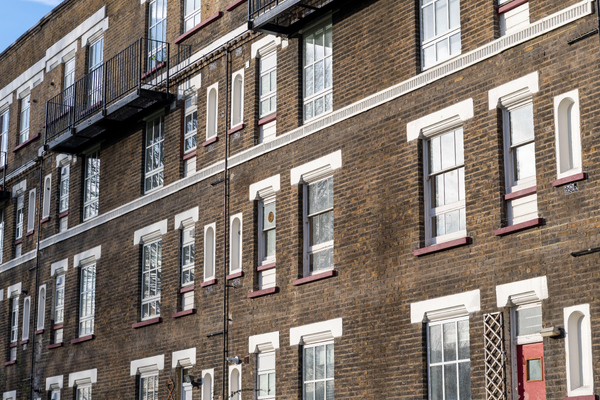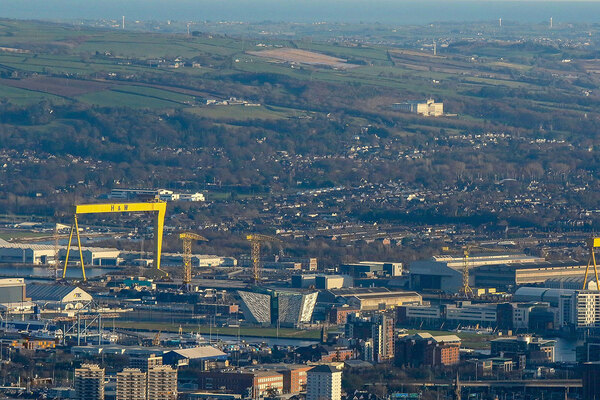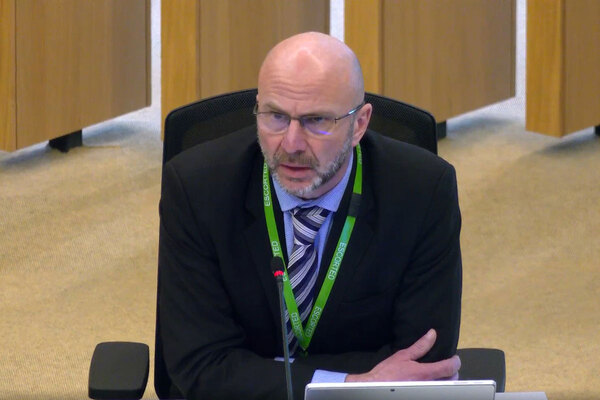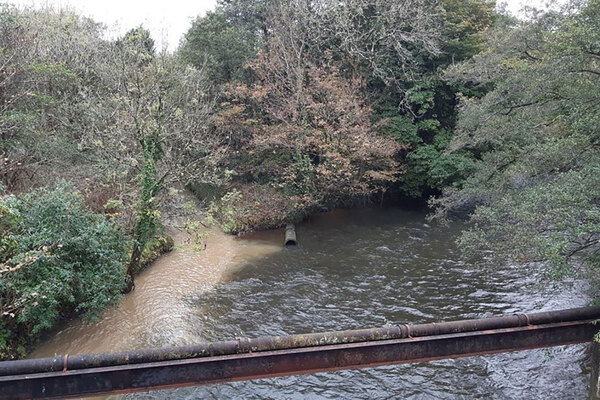You are viewing 1 of your 1 free articles
What do the leaked Kingspan meeting notes show?
Notes from an internal meeting of insulation giant Kingspan, seen by Inside Housing, contain some worrying revelations. Luke Barratt investigates. Picture: Alamy
The date was 14 September 2017. It was exactly three months after flames ripped through Grenfell Tower, and the insulation industry was facing something of a crisis.
After the fire, the political and media spotlight had fixed firmly on the use of combustible insulation materials on the outside of high rises. And in August, official government tests had revealed some commonly used insulation products failed fire safety tests in combination with certain types of aluminium cladding.
Against this backdrop, staff at the insulation giant Kingspan sat down for a meeting to discuss their response.
This meeting, led by Adrian Pargeter, head of technical and marketing at Kingspan UK, was intended to be private. But notes taken by a staff member attending have been seen by Inside Housing, and they raise a number of issues of public concern.
It should be pointed out at the outset that Kingspan has argued these notes are in places inaccurate and we have omitted any sections from our reporting that we know to be untrue.
But in other places they reveal concerning insights into the aftermath of the crisis (see below)
"DOCTORED REPORTS"
The insulation on Grenfell Tower – which sat behind the cladding and was attached to the wall – was mostly made of a plastic material called polyisocyanurate, or PIR, with a small amount of Kingspan’s phenolic foam also found on the building.
On the simplest reading, building regulations would not allow either of these materials to be used on tower blocks. The regulations require limited combustibility insulation, which they are not.
But building regulations permit an exception.
“[The BRE] will have a version they issue to us… private… plus their own version. People have been doctoring the reports.”
In what is known as a BS 8414 test, a manufacturer can test the fire resistance of combustible insulation as part of a cladding system on a nine-metre high model wall. If it passes, regulations allow it to be used, but only in the same detailed specification in which it was tested.
Many of these tests are done at the Building Research Establishment’s (BRE) laboratory in Watford. Usually the results are kept secret. They are deemed ‘commercially confidential’ and it is up to the manufacturer to release any information it chooses to make public.
But after Grenfell, the BRE asked manufacturers for permission to publish details to compile a public list.
The BRE has done more than 100 tests on behalf of many companies. To compile this list, the BRE chose to use its own data of what had been tested – not the manufacturers’ records.
In the end, following this, a list of 54 tests by 12 companies was published, along with details of the materials used in the test.
The meeting notes state that there was concern that the existing manufacturers’ reports had been “doctored”.
“[The BRE] will have a version they issue to us… private… plus their own version,” the notes say. “People have been doctoring the reports.”
There is no suggestion that this allegation of doctoring applied to Kingspan itself. Rather it raises a concern that other companies may have been altering the details of the tests. The BRE says it has no evidence of any doctoring. It also says there is no difference between its copy of the report and the copy it issues to manufacturers, which manufacturers are then free to release at their own discretion.
A Kingspan spokesperson did not deny that a claim of this kind was made at the meeting. But they said it was merely “speculation”, adding: “There was some loose and poorly expressed speculation as to whether the BRE had found inconsistencies between some documents (not Kingspan’s).”
A BRE spokesperson, meanwhile, told Inside Housing: “We have not come across ‘doctored’ BS 8414 reports to date. If people are ‘doctoring’ reports, this is fraud and should be reported to Trading Standards. If we are also made aware, we will take steps to warn of their existence.”
DESKTOP STUDIES
Since 2014, the industry has not always tested new combinations of material to clear them for use on high rises.
Instead, they have used so-called ‘desktop studies’. These studies take information from previous BS 8414 tests and extrapolate results for other combinations of cladding and insulation.
The meeting notes show Kingspan had recently stopped distributing its Routes to Compliance: Fire Safety brochure – guidance it had issued to the industry on how to ensure its products were used in a way which complied with regulations. “We are not distributing the [Routes to Compliance] brochure any longer,” the notes say. In this withdrawn document, the company relies on desktop study data to list cladding materials that are safe to use with its K15 phenolic foam insulation in specified circumstances, including aluminium composite material (ACM) with a fire-retardant core. But shortly before the meeting, this combination had failed one of the official government tests.
Kingspan has since issued an updated version of the brochure, with the K15/ACM combination removed. But this was not enough for it to end its support of desktop studies.
The notes state that Kingspan’s “strategy” is to “support 8414 tests, support desktop studies”, a strategy it later pursued in its submission to Dame Judith Hackitt’s review of building regulations – although it does say reforms are needed, such as a standard methodology.
A Kingspan spokesperson told Inside Housing: “Desktop studies are a necessity, but their use requires significant reforms including the introduction of a published register of approved studies, and a government-approved standard methodology.”
"A CREDIBLE ALTERNATIVE"
The failure of the government test that used K15 with fire-retardant ACM was naturally a blow to the company. The result could have led landlords around the country to strip off their Kingspan insulation if combined with ACM of that class.
The meeting notes record the company’s plans to test the combination again, changing gaps between the ACM panels on the outside of the wall. This, in theory, would make it harder for fire and oxygen to spread behind the panels into the cavity barrier and therefore limit the ‘chimney effect’ that risks causing flames to spread quickly up the building.
“We will be changing the gap to a 4mm and if we get a pass it’s a credible alternative.”
The government test used 20mm gaps, which Kingspan says is not the industry standard. In these meeting notes, the company proposes to do two more tests: using a 10mm gap and a 4mm gap.
The meeting notes state: “We will be looking at challenging the norms that are associated with non-combustible. We will be changing the gap to a 4mm and if we get a pass it’s a credible alternative.”
According to an advertisement that Kingspan placed in a Scottish building magazine, both these tests passed, and Kingspan advised building owners that if they had a system with these gaps they may not need to remove the cladding.
There are concerns about this approach. Arnold Tarling, a chartered surveyor at Hindwoods, notes that “in practice [the gaps are] always 20mm plus or minus, or 4mm plus or minus”. Although panels are machine-engineered, this is still a small margin for error.
A Kingspan spokesperson told Inside Housing: “We sought to ensure that where there are systems using our product, they are demonstrably safe, and fully in line with building regulations.”
THERMOCOUPLES
The notes also highlight data which suggests a potential problem with the official testing itself. There are two ways for a model wall to fail a test: if fire spreads to the top, or if the temperature reaches a certain level. Thermocouples, which measure temperature, are placed on the wall to measure the temperature throughout the test.
To be clear, the systems failed the tests due to rapid fire spread and are not safe for use on high rises. This article is not questioning that fact.
However, Kingspan’s rival, Rockwool, has criticised the tests – designed by Kingspan’s subsidiary, Booth Muirie – for placing the thermocouples just above fire barriers, which protected them from the flames.
Kingspan has said the test design was based on a previous test from October 2016 which Booth Muirie had no control over. The BRE has said the failure criteria for the test “are very clear and unambiguous” and the government has said it fully stands by the integrity of the tests.
"Flames can tear all the way up a wall and not record a failure on the thermocouple data"
Nonetheless, commenting on a failed government test where fire reached the top of the wall, the notes state: “The thermocouple data (heat intensity and progression) would have been a strong pass had [flames] not reached to the top.”
The temperature readings recorded in the government’s test publicly available report confirm this, but neither the BRE nor the government have ever publicly drawn attention to this.
Inside Housing analysis of data from the seventh government test – which used Kingspan’s K15 product – reveals thermocouples would have recorded a pass had flames not reached the top of the wall.
So the data shows flames can tear all the way up a wall and not record a failure on the thermocouple data. Other systems which pass the test do so on the assumption that the thermocouple data is robust and accurate. This, and many other questions, merit further review.
Inside Housing Spotlight
Inside Housing Spotlight is a series of pieces showcasing the best of our investigative and data journalism.
Spotlight pieces:
14 December 2018: Starting to bite - how Universal Credit is making people homeless: we reveal new figures showing a clear link between Universal Credit and homelessness
9 November 2018: First Priority - the inside story of a housing association which almost went bust When a small supported housing provider entered into a series of leasing deals with investment funds, it nearly spelled disaster for its vulnerable tenants. We investigate why.
12 October 2018: The ballad of Knowsley Housing Trust the inside story of the first housing association made non-compliant by the sector's watchdog for fire safety issues
13 September 2018: How tweaked building guidance led to combustible insulation on high rises: an investigation shows how lobbyists from the plastic insulation industry supported a quiet tweak to building guidance to permit combustible insulation on tall buildings
31 August 2018: The true cost of homelessness Freedom of Information requests reveal the soaring costs of temporary accommodation
30 August 2018: The forgotten threat to high rise tenants We investigate the threat posed by combustible window panels on social housing high rises
13 June 2018: The Biggest Ever Survey of Fire Risk Assessments Data journalism revealing widespread fire safety issues in more than 1,500 tower blocks across the country
12 April 2018: A Section 106 Story An investigation into allegations of "sham transactions" involving Section 106 deals in south London
23 March 2018: The Paper Trail: The Failure of Building Regulations A lengthy investigation into the failures of building regulation that may have contributed to the Grenfell Tower disaster, and the many missed warnings
23 February 2018: The Kingspan Papers Leaked meeting notes reveal some worrying issues, including allegations of fire safety report doctoring by manufacturers
9 February 2018: Gentoo: a Sunderland story We look back at the recent history of Sunderland’s largest housing association.
25 January 2018: Homeless families face long stays in council-owned hostels we reveal how councils in London are skirting the law by using hostels to house people in temporary accommodation for more than six weeks
7 December 2017: Council house to private rent We reveal the percentage of former Right to Buy homes in the private rented sector has passed 40%
17 November 2017: Rent to buy, or rent to rent? A look at how successful the government's Rent to Buy schemes have been
7 September 2017: Once upon a time in the west The history of KCTMO in the years before the Grenfell Tower fire
11 August: 2017 Grenfell: The paper trail - our news editor Pete Apps examines seven years of council documents to tell a story of the missed opportunites to prevent the Grenfell tragedy
4 August 2017 : Knowing the risks – the most common fire safety problems in tower blocks
26 May 2017: Rents hiked for RTB replacements – Sophie Barnes reveals less than half of Right to Buy replacement homes are for social rent
12 May 2017: A stark warning – a prescient piece looking at lessons to be learned from the Shepherds Bush tower block fire
13 April 2017: Where the axe will fall – a look at plans to axe housing benefit for younger people
10 Feb 2017: Circle of Despair – the inside story of Circle's repairs and maintenance troubles
3 Feb 2017: The Benefit Cap Tightrope – Sophie Barnes unveils the first exclusive analysis of the lower benefit cap
Never Again campaign
Inside Housing has launched a campaign to improve fire safety following the Grenfell Tower fire
Never Again: campaign asks
Inside Housing is calling for immediate action to implement the learning from the Lakanal House fire, and a commitment to act – without delay – on learning from the Grenfell Tower tragedy as it becomes available.
LANDLORDS
- Take immediate action to check cladding and external panels on tower blocks and take prompt, appropriate action to remedy any problems
- Update risk assessments using an appropriate, qualified expert.
- Commit to renewing assessments annually and after major repair or cladding work is carried out
- Review and update evacuation policies and ‘stay put’ advice in light of risk assessments, and communicate clearly to residents
GOVERNMENT
- Provide urgent advice on the installation and upkeep of external insulation
- Update and clarify building regulations immediately – with a commitment to update if additional learning emerges at a later date from the Grenfell inquiry
- Fund the retrofitting of sprinkler systems in all tower blocks across the UK (except where there are specific structural reasons not to do so)
We will submit evidence from our research to the Grenfell public inquiry.
The inquiry should look at why opportunities to implement learning that could have prevented the fire were missed, in order to ensure similar opportunities are acted on in the future.

